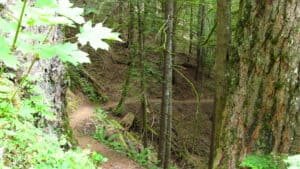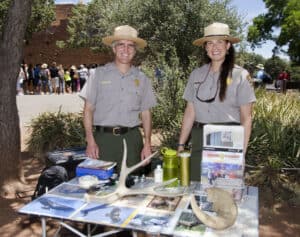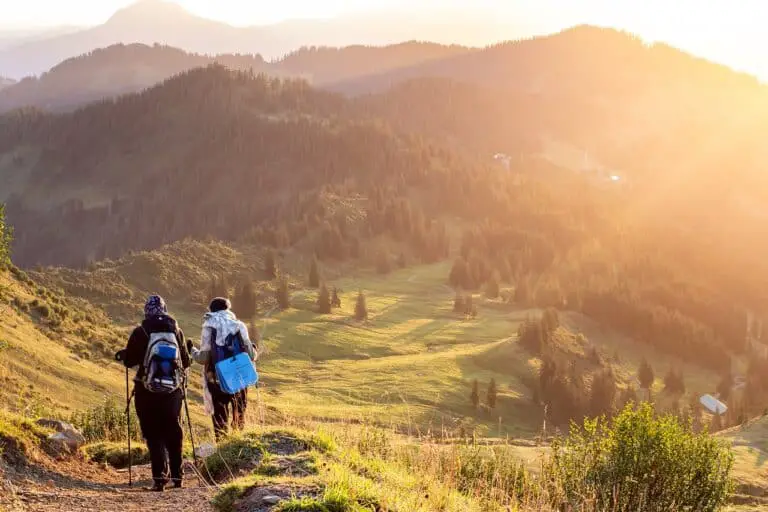Ever wondered who maintains hiking trails we all love to explore? I did too, and that’s what we’ll dive into in this article. We’ll uncover the unsung heroes who ensure our outdoor adventures remain safe and enjoyable.
From national parks to local woods, these trails don’t maintain themselves. It’s a blend of hard work from dedicated volunteers, park rangers, and even local communities. These trail guardians put in countless hours to keep the paths clear, safe, and accessible for everyone.
Trail Maintenance: An Unsung Hero

When you’re out in the wilderness, losing yourself on a beautifully maintained hiking trail, do you ever stop to wonder who’s responsible for keeping these trails in top condition? It’s an unsung hero that deserves our appreciation: the trail maintenance crew.
These heroes are made up of a dedicated fleet of volunteers, park rangers, and local community members who consistently put in work to keep trails safe for everyone. They work tirelessly clearing fallen trees, filling in eroded stretches, and ensuring trails are well-marked and accessible.
Volunteers make up a significant portion of the workforce. Loaded with shovels, saws and endless enthusiasm, they put in countless unpaid hours to keep trails open. It’s not an easy task, especially considering some of these trails run for hundreds of miles through rugged terrain.
Park rangers, on the other hand, are the professionals in the field. They are tasked with the responsibility of overseeing the management and conservation of these beautiful areas. Some of their duties include routine patrols to ensure safety standards are met, carrying out necessary repairs and improvements, and in some cases, they’re even tasked with rebuilding entire trail sections damaged by natural disasters.
Finally, the local community members. They are the beating heart that keeps the trails alive. Their love and respect for nature often shines through their participation in local trail clean-ups, fundraising activities and advocating for the protection and preservation of these hiking heavens. Plus, they know the area better than anyone else. Hence, they’re often the first to report any issues.
As I walk through these trails, witnessing the results of such remarkable dedication and commitment, I can’t help but feel immense gratitude. So next time you’re out there, take a moment to appreciate this unsung hero. We get to enjoy these trails because of them.
The Role of Volunteers in Trail Maintenance
One of the key components of maintaining our hiking trails is the hard work put in by volunteers. Volunteers are the unsung heroes who selflessly dedicate their time and efforts to protect and improve these wonderful outdoor spaces. Their work deserves recognition that it isn’t always accorded.
Volunteers come from various walks of life. They may be students, retirees, professionals, or even tourists who want to give back to the environment they enjoy. But what all these folks have in common is a love for the outdoors and a strong desire to preserve our natural landscapes.
The work they do varies but is always crucial. Tasks often include:
- Clearing dead or fallen trees from the trail
- Repairing eroded sections of the pathway
- Installing or updating trail signs and markers
- Regular litter pickup to keep our trails clean
Being a trail maintenance volunteer is not just about outdoor work, though. It is a chance to connect with nature, make new friends who share the same interest, and learn various outdoor skills from experts in the field. Some volunteers even find their passion in this work, leading to a career in conservation or park management.
It’s important to remember that without volunteers, many of our beloved hiking trails would be in far worse condition than they are now. The next time you’re out on a nature walk, spare a thought for these generous individuals who have helped make your experience possible.
As we examine the essential role volunteers play in maintaining hiking trails, let’s also glimpse at the contributions of park rangers and local community members in subsequent sections.
Park Rangers: The Stewards of Hiking Trails

Park Rangers often serve as the lifeblood of our hiking trails. Their hard work goes beyond trail maintenance. They’re about more than just the physical condition of the paths, they embody the spirit and essence of nature itself.
Day in and out, these tireless caretakers observe changes in the environment. They’re on the lookout for fallen trees, fixing eroded sections, and installing trail signs. I’ve seen them in action when I’ve been out on my treks. Their dedication is infectious. You can’t help but respect their commitment to preserving our natural heritage.
Rangers also safeguard wildlife, help prevent forest fires, and carry out vital research projects. They juggle multiple roles to ensure the upkeep of well-loved hiking trails. It’s because of rangers that wildlife can thrive, hikers can explore safely, and flora can flourish.
I’ve often bumped into rangers during my hikes. Their vast knowledge about the area enhances the hiking experience. Rangers offer insights about the local plants, historical sites, and wildlife. They also educate visitors about safety and the principles of Leave No Trace. This knowledge equips us to become responsible stewards of nature.
It’s also worth noting park rangers’ role in maintaining accessibility. They ensure hiking trails can accommodate all types of hikers. From novices to experienced trekkers, from families to solo hikers, rangers work to make sure everyone can enjoy the trail.
These trail guardians deserve our appreciation and respect. Next time you’re out on the trails, remember: it’s more than just you and the great outdoors. It’s also the park rangers, working behind the scenes to conserve, preserve, and keep hiking trails accessible for generations to come.
Partnerships with Local Communities
Naturally, the task of maintaining hiking trails wouldn’t merely fall on the shoulders of park rangers. I’ve found that local communities often play an integral part by forming partnerships with the ranger services. These alliances provide a two-fold benefit – engendering a sense of ownership and responsibility towards the trails, and mitigating some of the burden from the park rangers.
In particular, volunteer programs initiated by these communities are a frequent sight. Volunteers take part in various activities. They help in the cleansing and upkeep of hiking trails, clearing debris, or even assisting rangers in some of their duties. These communal efforts not only aid in trail maintenance but also increase awareness about the ecological importance, ensuring more hikers commit to the Leave No Trace principles.
Local communities also contribute significantly by undertaking fundraising initiatives. This financial support can fund necessary repairs, trail improvements, or conservation efforts the regular budget may not cover. Plus, local businesses can indirectly contribute to trail maintenance by endorsing responsible tourism strategies, which have a less damaging impact on hiking trails.
Furthermore, local schools and youth organizations are often roped in to educate young minds on the importance of trail preservation. In doing so, we’re nurturing a newer generation that understands the value of these trails, the importance of their maintenance, and the value of wildlife conservation.
It’s this unity, this coming together of park rangers, local communities, volunteers, and businesses, that truly sustains the hiking trails we so love. We stand as a collective, dedicated to preserving these paths of exploration for future generations. Moreso, we ensure they remain a shared resource, accessible to all types of hikers.
The Importance of Trail Maintenance for Outdoor Enthusiasts

These outdoor enthusiasts – the hikers, runners, cyclists, photographers, and nature lovers among us, can’t access these areas without well-maintained trails. Now, you must be thinking, “Why is that so crucial?”
The answer’s quite simple: Safety, Accessibility, and Sustainability.
For Safety Remember, we’re dealing with nature and wildlife here. Maintained trails provide clear directions, reducing the risk of getting lost. Though venturing off the beaten path can seem appealing, it often leads to injuries, from mild sprains to life-threatening falls.
For Accessibility Well-maintained trails ensure that everyone, regardless of physical limitations, can access nature’s wonders with ease. Whether it’s wide, wheelchair-accessible trails or something a bit more challenging, trail maintenance ensures inclusivity. Trails are not just for the hardcore adventurers anymore. It’s about families, children, elderly hikers, and people with disabilities getting out and enjoying nature together.
For Sustainability Without maintenance, trails can erode or become overgrown. We minimize harmful human impact on the environment with proper care. Trail maintenance helps avoid soil erosion, damage to flora, and disruption of animal habitats. And it’s not just about keeping the trails pretty. It’s about preserving these wild spaces for future generations.
From this perspective, the importance of trail sustainability and those responsible for maintaining hiking trails becomes evident. This responsibility falls on all who use, love and appreciate them – the park rangers, local communities, volunteers and businesses alike. Trail maintenance isn’t just about keeping nature accessible, it’s about protecting and preserving it. The beauty is – it’s a team effort.
Effectively caring for and maintaining hiking trails is no small feat. It involves consistent hard work, community support, and a strong dedication to both the trails and the people who use them. Together, we can ensure these hiking trails remain accessible, safe, and sustainable for all outdoor enthusiasts.
Conclusion: Who Maintains Hiking Trails
So, we’ve learned that trail maintenance isn’t just about keeping paths clear. It’s about safety, accessibility, and sustainability. It’s a labor of love carried out by park rangers, local communities, volunteers, and businesses. They’re the unsung heroes, ensuring our hiking trails remain open and inviting for all.
But let’s not forget, it’s also a shared responsibility. As hikers, we can help too. Whether it’s picking up litter, sticking to the path, or volunteering our time, there’s always a way to contribute. After all, these trails aren’t just for us. They’re for everyone, and for future generations to enjoy.
Remember, every time you set foot on a hiking trail, you’re stepping into a space that’s been cared for by countless hands. So, let’s do our part to keep these trails in the best condition possible. After all, we’re all part of the hiking community.

